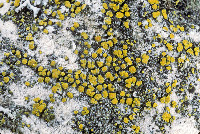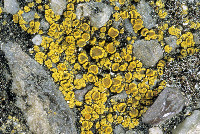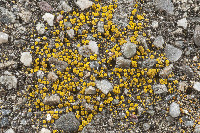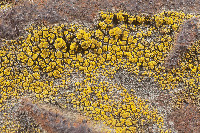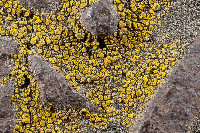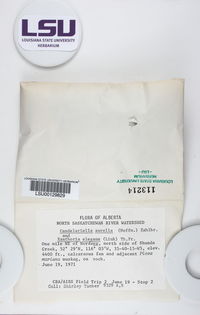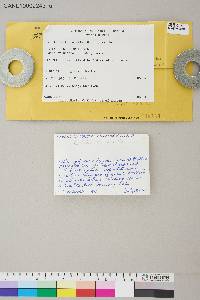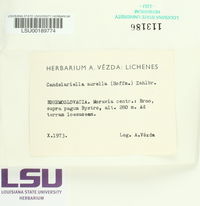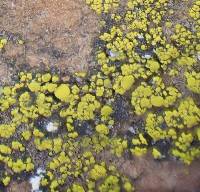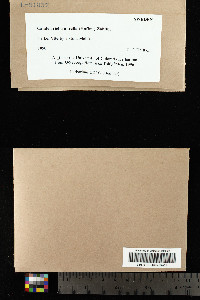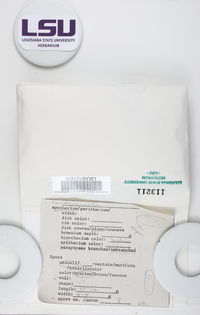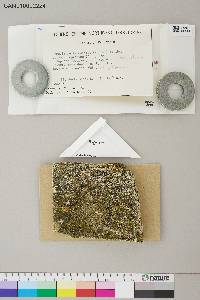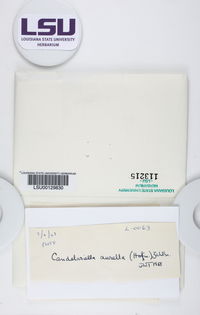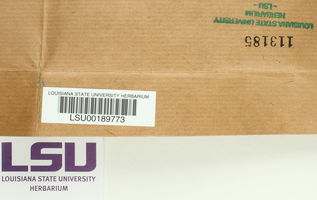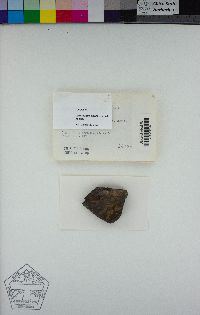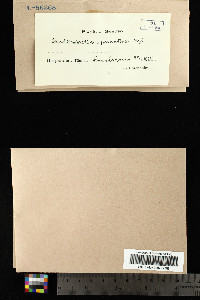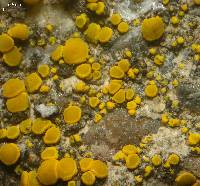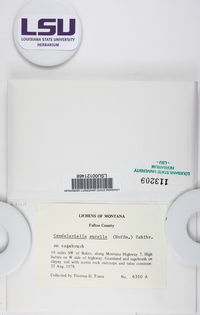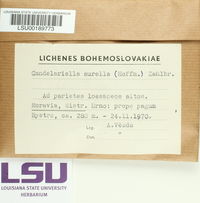
Consortium of Lichen Herbaria
- building a Global Consortium of Bryophytes and Lichens as keystones of cryptobiotic communities -
- Home
- Search
- Images
- Species Checklists
- US States: O-Z >
- US National Parks
- Central America
- South America
- US National Parks
- Southern Subpolar Region
|
|
|
|
Family: Candelariaceae
[Candelaria vitellina var. aurella (Hoffm.) Hazsl., moreCandelariella epixantha (Ach.) Sandst., Placodium vitellinum var. aurellum Ach.] |
Nash, T.H., Ryan, B.D., Gries, C., Bungartz, F., (eds.) 2004. Lichen Flora of the Greater Sonoran Desert Region. Vol 2. Thallus: crustose, composed of small scattered areoles, sometimes inapparent areoles: convex, mostly rounded to somewhat elongated, 0.1-0.3 mm long, rarely becoming lobe-like surface: yellow, sometimes partly or wholly bleached, smooth cortex: pseudoparenchymatous, 7-17 µm thick Apothecia: abundant, lecanorine, 0.25-0.6 disc: concolorous with or darker yellow than the thallus, round, flat or more often sligthly convex, sometimes strongly convex margin: thin to thick, entire and even to very uneven and often partly excluded and remaining as a few granules exciple: thin, usually not visible from the outside, epihymenium: yellow-brown hymenium: hyaline, 60-80 µm tall; paraphyses: simple or sometimes branched near the tips, cylindrical or weakly swollen apically, with up to 3.5 µm wide tips; hypothecium: hyaline asci: clavate, 8-spored ascospores: hyaline, simple to 1-septate, ±narrowly ellipsoid, 12-17 x 4-5 µm Pycnidia: not seen Spot tests: K- to K+ reddish, KC-, C- Secondary metabolites: calycin, pulvinic acid, pulvinic dilactone and vulpinic acid. Substrate and ecology: mostly on calcium-rich rocks, sometimes on bark or wood World distribution: world-wide Sonoran distribution: on limestone and sandstone in Arizona, California and Baja California. Notes: The typical C. aurella has a thallus of scattered convex, yellow areoles and small apothecia with a somewhat convex disc and with a thin, uneven and often partly excluded margin. It is separated from C. antennaria by its ±cylindrical paraphyses, and mostly by its yellow thallus. |
|
|
|
Powered by Symbiota



